Gmail hacks: 15 ways to unlock Gmail inbox productivity
Want to reach inbox zero? Elevate your email experience with these 15 Gmail hacks and become a master of inbox productivity.
Sometimes, excitement gets the best of us or a big weekend of holiday sales is coming soon, and we subscribe to dozens of newsletters without even realizing what we’ve just done to our inboxes. In the months that follow, it’s no surprise that you’ll have invited hundreds of unwanted emails to your inbox.
Sounds familiar?
That's a trap that most Gmail users have fallen prey to.
However, Google can help you avoid an email avalanche with just a few clicks. With the Gmail unsubscribe feature, you can stop promotional emails from sneaking into your inbox or block unwanted newsletters from bothering you any further. Read on to learn how to use this super convenient unsubscribe feature.
<a href="#differences-between-blocking-and-unsubscribing" class="anchor-link">Differences between blocking and unsubscribing</a>
<a href="#list-of-subscriptions-in-google-account" class="anchor-link">List of subscriptions in your Google account</a>
<a href="#unsubscribe-from-emails-in-gmail" class="anchor-link">Unsubscribe from emails in your Gmail inbox</a>
<a href="#unsubscribe-from-gmail-on-desktop" class="anchor-link">Unsubscribe from Gmail on desktop</a>
<a href="#unsubscribe-from-gmail-on-mobile-devices" class="anchor-link">Unsubscribe from Gmail on mobile devices</a>
<a href="#block-emails-in-gmail" class="anchor-link">Block emails in Gmail</a>
<a href="#improve-gmail-inbox-management" class="anchor-link">Improve Gmail inbox management with Streak</a>
<div class="anchor-wrapper"><div id="differences-between-blocking-and-unsubscribing" class="anchor-target"></div></div>
Before delving into the details of unsubscribing, you need to know the key differences between blocking and unsubscribing:
Blocking an email, also known as "Report Spam," means you’re asking Gmail to move all unwanted emails from a specific sender to the Spam Folder. These senders won't know that you've blocked their emails, so you'll receive future emails; they'll just automatically be filtered into your Spam Folder.
In contrast, when you unsubscribe from emails, the senders will be notified that you no longer wish to be part of their mailing lists. This mostly applies to unwanted newsletters, daily emails, and the like. Unfortunately, this doesn't always stop the incoming flux of unwanted emails and, to make matters worse, not all marketing emails even have this option, even though they should if they’re complying with local and federal regulations.
Now that you know these key differences, you can decide which works best for you. Both methods will help you organize your inbox effectively and protect you from unwanted email clutter.
<div class="anchor-wrapper"><div id="list-of-subscriptions-in-google-account" class="anchor-target"></div></div>
To see a list of all of the email subscriptions connected to your Google account, including paid ones, here's what you need to do:
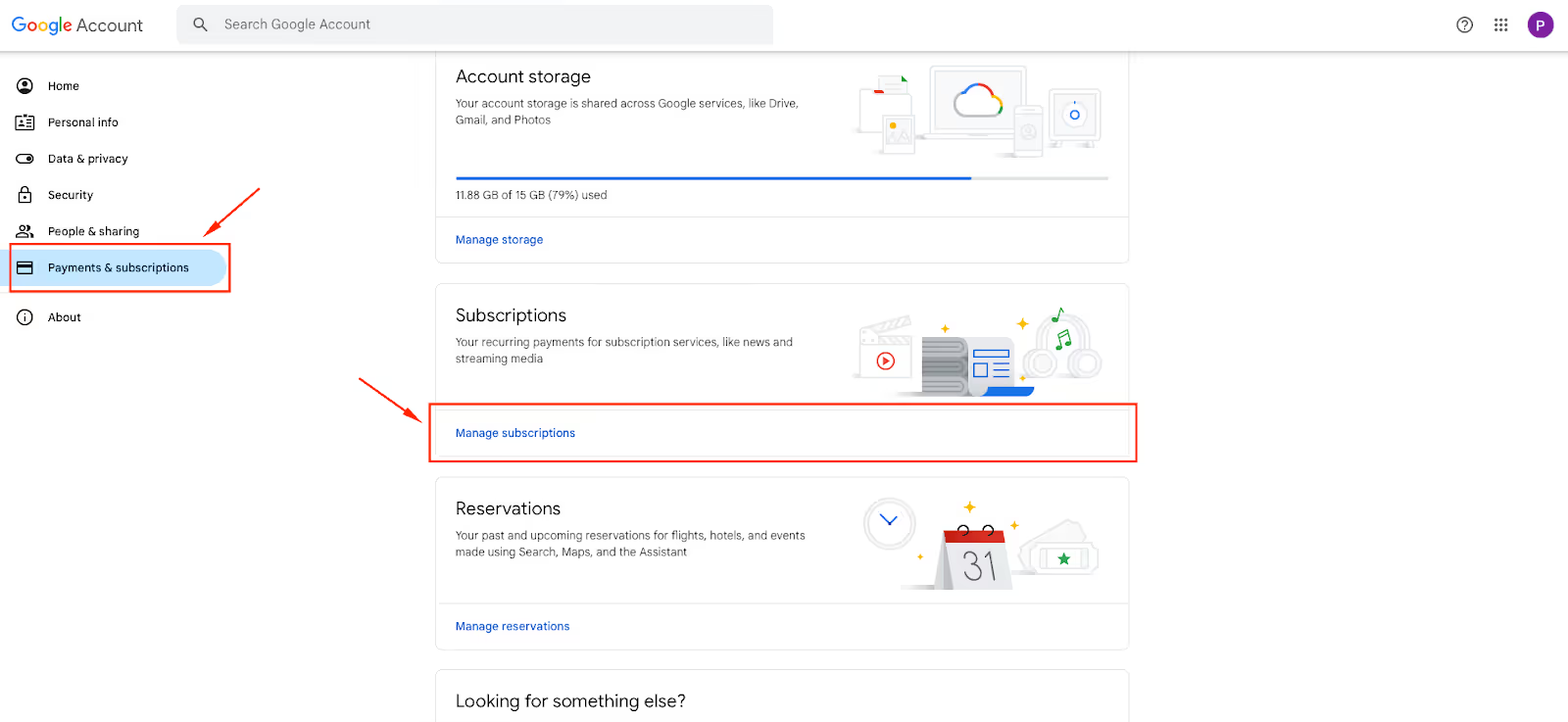
<div class="anchor-wrapper"><div id="unsubscribe-from-emails-in-gmail" class="anchor-target"></div></div>
If you decide that the Gmail unsubscribe feature is the best option for sorting your emails, here are three ways you can make that happen:
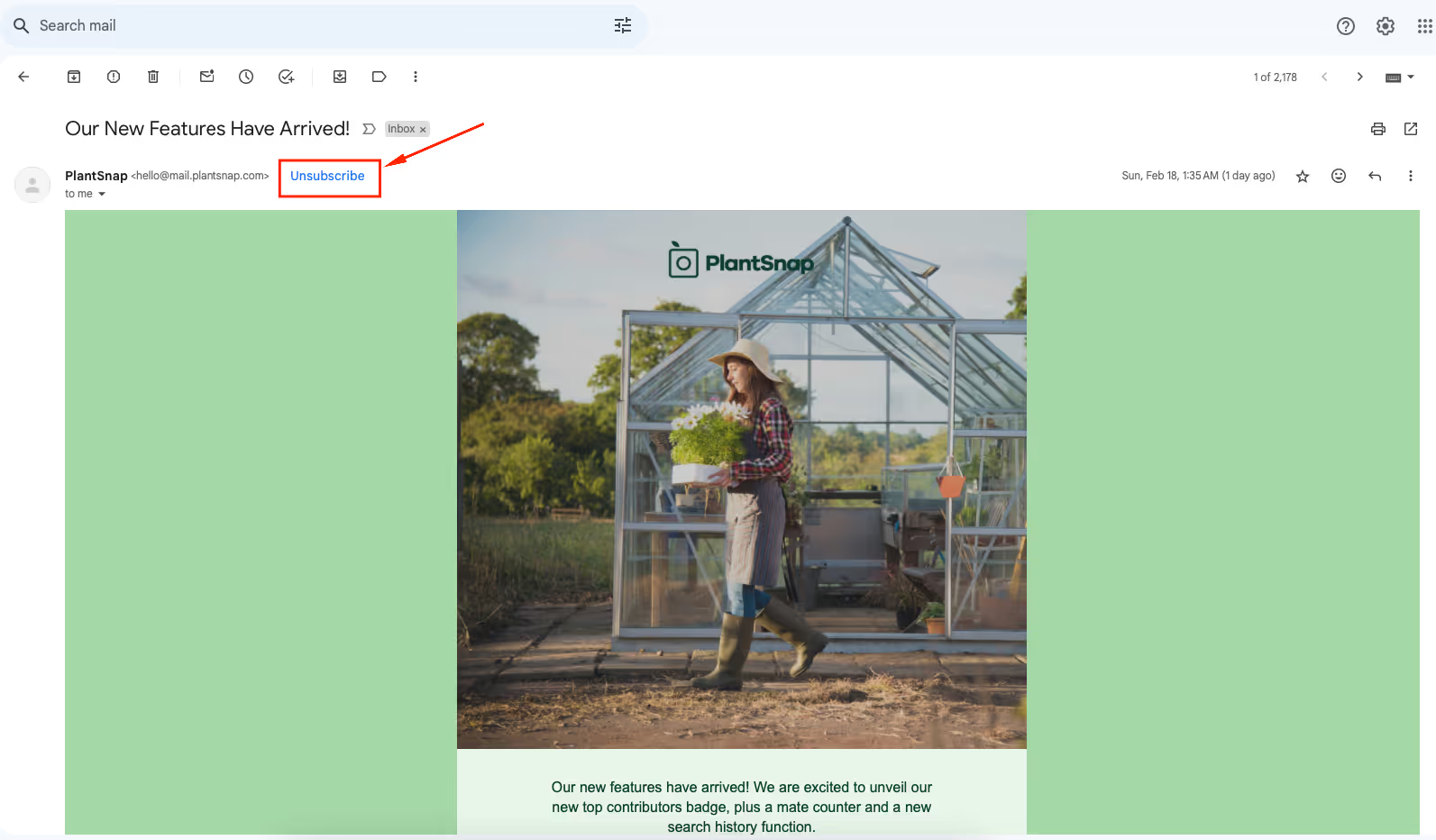
The only two downsides to this method are:
But luckily, there are other, more sure-fire ways to unsubscribe from emails from certain individuals or organizations.
If you regularly read through emails you’ve subscribed to, you've probably already noticed that there’s a Gmail unsubscribe button at the top, next to the sender's name and email. Many senders opt to add this list-unsubscribe header link to their emails, which aids Google in locating this link and displays the unsubscribe button at the top of the email.
Much like the previous method, once you click Unsubscribe, a dialogue box will appear and you can click Unsubscribe once more to confirm your decision.
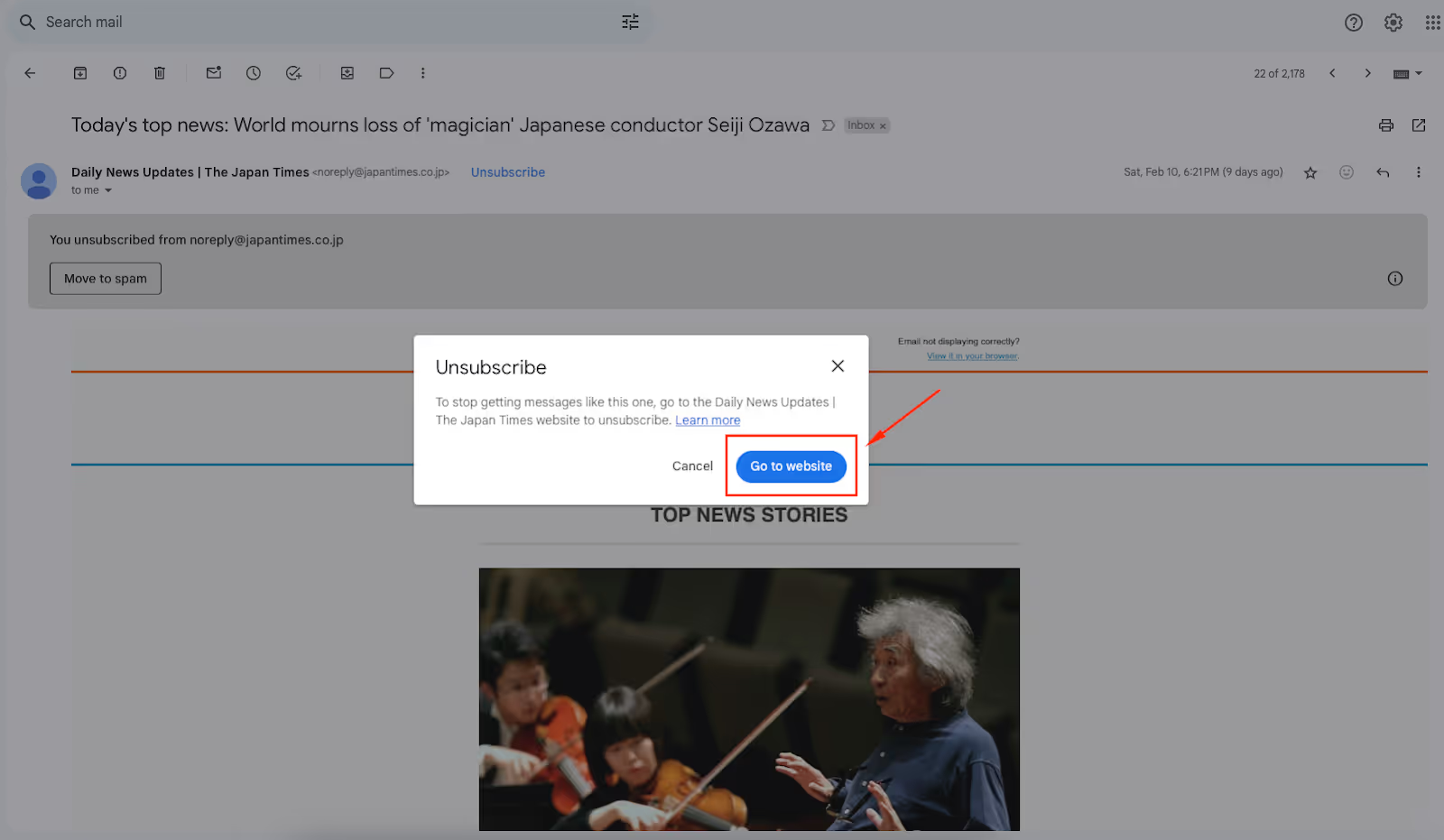
Pro Tip: If you can't find this button, check out the sender card; you might find the unsubscribe link there instead.
If the previous methods don't work, most subscription emails will include an unsubscribe link at the bottom of their emails, which you can click on to easily unsubscribe.

The link will most likely direct you to the sender's website, where you'll find the relevant steps to opt out of this subscription.
Is this a guaranteed way to stop receiving emails from that sender? Yes! The 2003 CAN-SPAM Act ensures that marketing emails and promotions have an unsubscribe link or button incorporated. If not next to the header or clearly displayed at the top by Google, it'll be somewhere in the body of the email.
Unfortunately, some senders might complicate this process, forcing subscribers to log in to their user profiles on their websites and give a reason as to why they're unsubscribing. However, to avoid fines and fees, most bulk email senders are generally compliant with this process and respectful of your decision to unsubscribe.
<div class="anchor-wrapper"><div id="unsubscribe-from-gmail-on-desktop" class="anchor-target"></div></div>
The previous methods should help you easily detect a Gmail unsubscribe link or button if you're a Windows user and are using the Gmail app.
But if you’re an Apple iOS user and can’t find the unsubscribe feature, here's how to do so:
Fortunately, the Mail app automatically detects if the email is promotional and will display the unsubscribe button for you; you don't have to search for an unsubscribe link yourself.
<div class="anchor-wrapper"><div id="unsubscribe-from-gmail-on-mobile-devices" class="anchor-target"></div></div>
Some users don't use Gmail on a desktop and will opt instead to use their mobile devices. That’s no problem at all; you'll still have the option to unsubscribe from any smart device. The steps are just a little bit different.
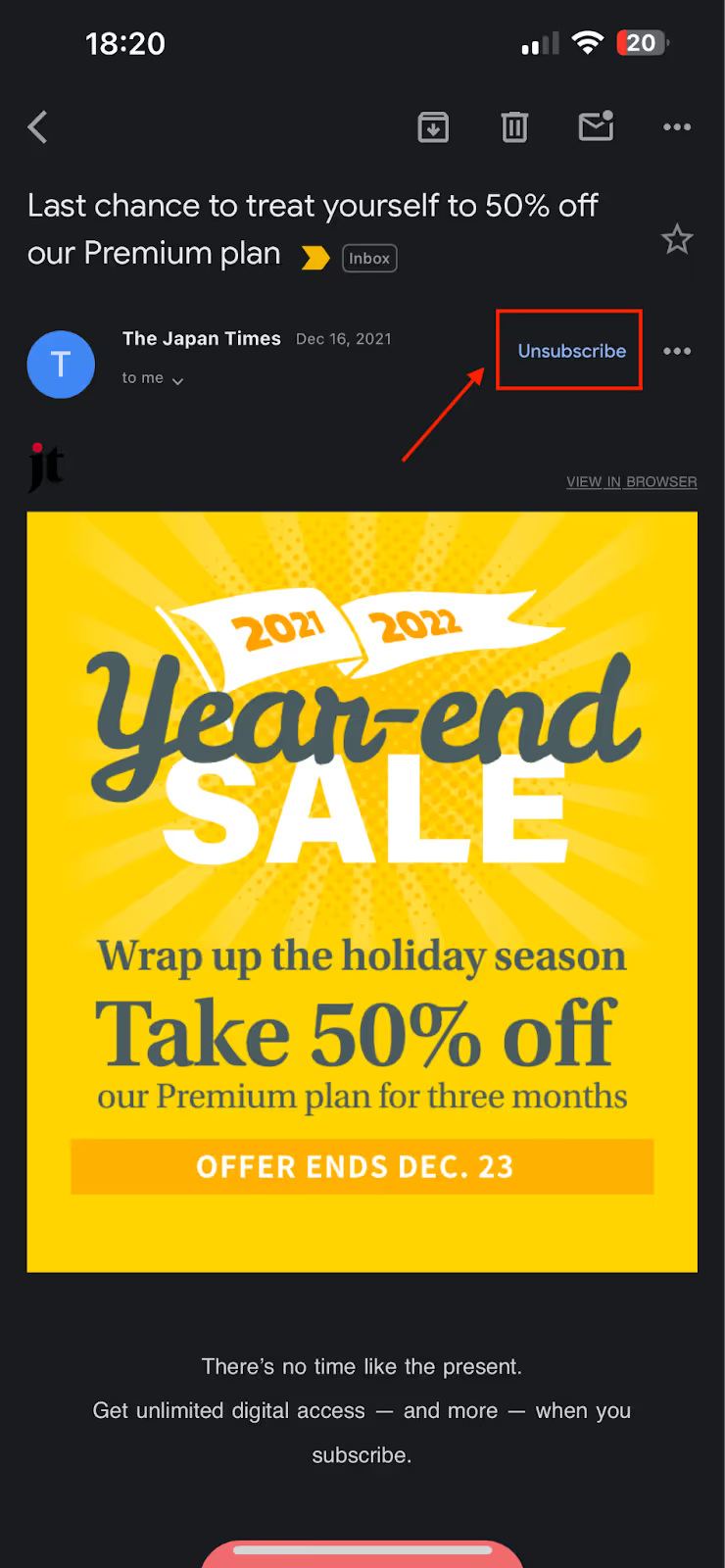
<div class="anchor-wrapper"><div id="block-emails-in-gmail" class="anchor-target"></div></div>
Unsubscribing can sometimes be a hassle. If this is the case, you may have to resort to the following methods:
<div class="anchor-wrapper"><div id="block-emails-on-desktop" class="anchor-target"></div></div>
Congratulations! You've permanently blocked any future emails from the sender with these simple steps. You'll find any emails from the sender you’ve blocked in your Spam or Clutter folders, and you can read them if you ever wish to.
Note: The sender won't be aware that you've blocked them.
<div class="anchor-wrapper"><div id="block-emails-on-mobile" class="anchor-target"></div></div>
Although the Gmail interface on smartphones is a bit different, the steps are, more or less, the same:
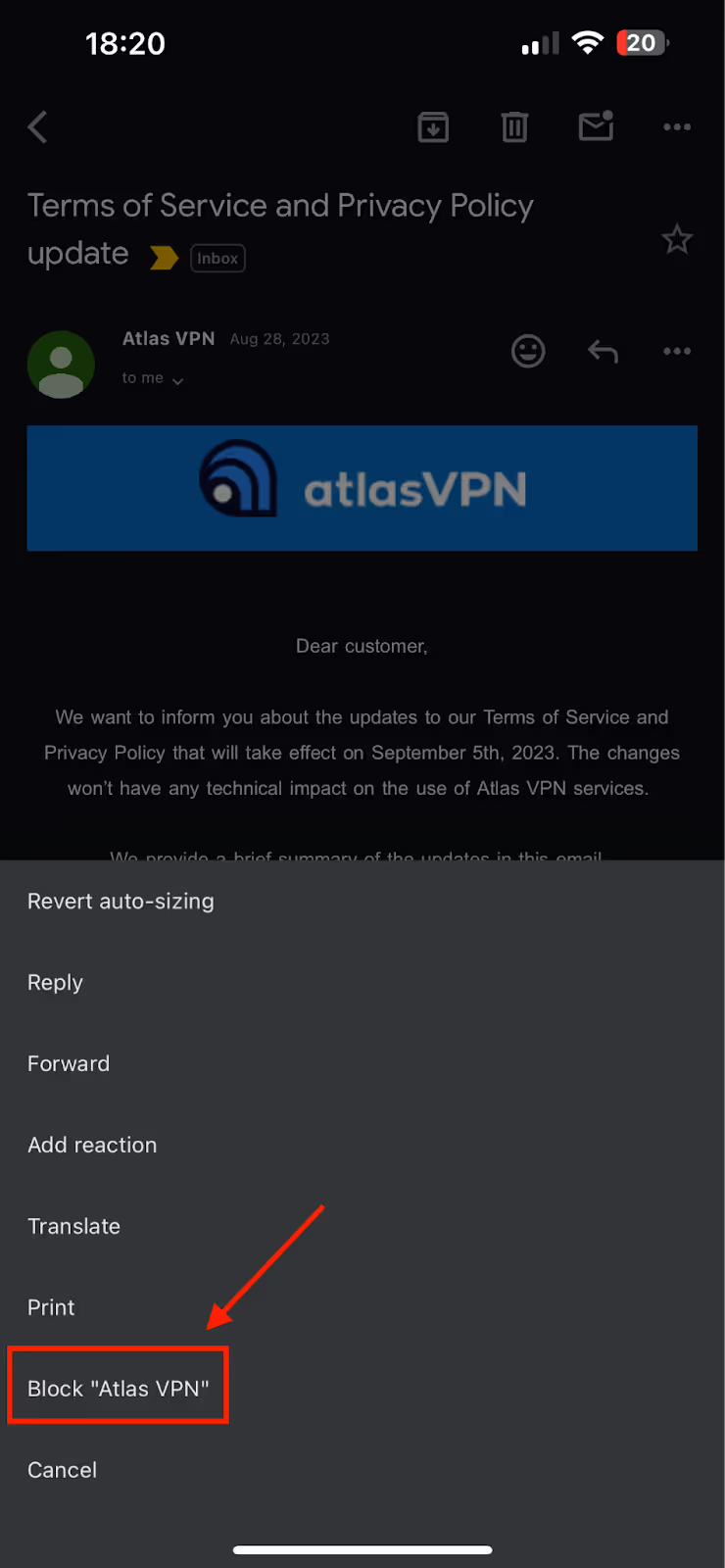
With these options laid out, you can now make an informed decision on whether or not to unsubscribe from emails or block them entirely. Do note that users normally resort to blocking, as it blocks all contact with the sender. The unsubscribe feature, on the other hand, is designed specifically for certain emails.
<div class="anchor-wrapper"><div id="improve-gmail-inbox-management" class="anchor-target"></div></div>
Even with features like unsubscribing built into Gmail, it can still be a hassle to manage the unstoppable flow of emails coming every day, and options like “Mass Unsubscribe" become more tempting.
This is where Gmail tools like Streak come in handy. Get your emails tracked, filtered, and sorted out in an organized list, and from there, you can decide if you want to unsubscribe or block any of them. Your inbox can be kept clean and orderly, giving you more control over your emails.
Did you know that you can try Streak for free with no strings attached? Give it a go! It only takes 30 seconds to get started.
